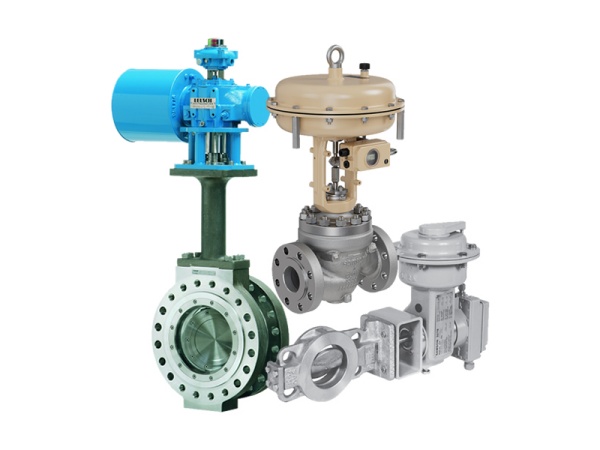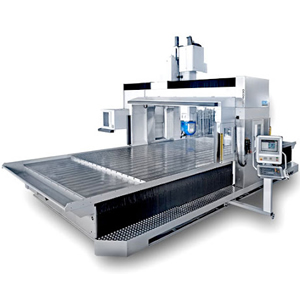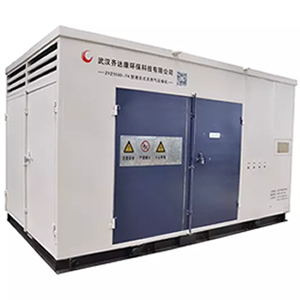He Aratohu Whanui ki a Mitsubishi Plc Tohutohu: Kaiwhakaako Katoa nga raupapa katoa i te waahi kotahi
He Aratohu Whanui ki a Mitsubishi Plc Tohutohu: Kaiwhakaako Katoa nga raupapa katoa i te waahi kotahi
I te mara o te Ahumoana Ahumahi, Mitsubishi PLC (Kaitito arorau e whai kiko ana) he whanui whanui mo o raatau mahi pakari me te tino pono. Ko tenei tuhinga e whakaatu ana i tetahi waahanga taipitopito o te tohu Mitsubishi PLC, tae atu ki:
Te kawenga me te whakaputa tohutohu
Raupapa whakapā me nga tohutohu honohono rite
Aukati i nga Mahi Whakahaerenga
Whakatakotoria me te tautuhi tohutohu
He tohutohu rereke a Pulse
Nga tohutohu a te Kaiwhakaako
NGĀ TOHUTOHU
I roto i te / kaore he mahinga / mutunga
Hipanga Tuuturu Tuhoe
Whakahohehia te maaramatanga whanui o Mitsubishi PLC Programming.
I. TE WHAKAMAHI KI TE WHAKAMAHI KI TE WHAKAMAHI
LD (Whakahauhau Tohutoro): Ka hono atu ki te waahi tuwhera (kaore) ki te taha maui ki te taha maui. Whakahau mo nga raina arorau e tiimata ana me te kore korero.
LDI (Whakahaa Tohutoro): hono i te hono atu (NC) ki te taha maui ki te taha maui. Whakahau mo nga raina arorau e tiimata ana me te whakapā nc.
LDP (utaina nga tohutohu e pa ana): Ka kite i te → i runga i te whakawhiti i tetahi hononga kore e hono ki te taha maui ki te taha maui.
LDF (utaina nga tohutohu e pa ana ki te taha): Ka kitea te: ki te whakawhiti i tetahi hononga NC e hono ana ki te taha maui ki te taha maui.
Out (Tohunga Utu): Ka peia e koe he COIL (putanga putanga).
Nga tuhinga Whakamahinga:
Ka taea e te LD / LDI te hono atu ki te raina maui maui ka whakakotahi ranei ki te Anb / Orb mo nga mahi arorau.
Ko te LDP / LDF te pupuri i te whakahohenga mo te huringa karapa anake i runga i te kitenga o te taha.
Nga waahanga whaainga mo te LD / LDI / LDP / LDF: X, Y, M, T, C, S.
Ka taea te whakamahi i waho (rite ki nga papaa-rite). Mo nga Timers (t) me nga kaihokohoko (c), tohua te KRETALT K, ki te rehita raraunga ranei i muri mai.
Nga waahanga Whaainga mo te: Y, M, T, C, S (kaore koe x).
II. NGĀ TOHUTOHU WHAKAMAHI KAUPAPA KAUPAPA
A: Ko nga raupapa-hono kaore he whakaputanga (arorau me).
Ani (me te koretake): Ko te raupapa-hono i te hononga NC (arorau me te kore).
Andp: Ko te hononga raupapa kua piki ake.
Andf: Ko te hononga raupaparorohiko kua hinga.
Nga tuhinga Whakamahinga:
Me / ani / Andp / Andf Tautoko i nga hononga raupapa mutunga kore.
Nga waahanga Whaainga: X, Y, M, T, C, S.
Tauira: I puta a M101 i muri mai me te T1 taraiwa Y4 he "putanga tonu" ""
III. Whakapa atu ki nga tohutohu honohono rite
Ranei: e hono ana i te hononga kore (arorau ranei).
Ori (or incverse): e hono ana i te hononga NC (arorau, kaore ranei).
ORP: Ko te kitenga o te tohu-ete ana i te hononga honohono.
ORF: Ko te kitenga-kore e pa ana ki te hononga honohono.
Nga tuhinga Whakamahinga:
Ka mutu te taha maui ki te hono ki te LD / LDI / LPF; Ka mutu te hono ki te mutunga o te tohutohu o mua. Whakamahia te kore mutunga kore.
Nga waahanga Whaainga: X, Y, M, T, C, S.
Iv. Aukati i nga Mahi Whakahaerenga
ORB (te poraka ranei): Te hononga honohono o te rua, neke atu ranei o nga waahanga whakapā.
Anb (me Poraka): Ko te hononga o te rua, neke atu ranei o nga waahanga whakapiri whakapiri.
Nga tuhinga Whakamahinga:
Ko ia poraka porowhita raupapa i te ORB me timata ki te LD / LDI.
Ko ia poraka porowhita takirua i roto i te Anb me timata ki te LD / LDI.
Te rohe o te 8 Tohutoro Orb / Anb.
V. Whakatu me te tautuhi tohutohu
Whakatakotoria: Whakahohe ka tae atu ki te waahanga whaainga.
RST: Ka whakakorea, ka whakakore i te huānga whaainga.
Nga tuhinga Whakamahinga:
Tautuhia nga whaainga: Y, M, S.
Nga Taonga o te RST: Y, M, S, c, c, d, v, Z. Z. Kua whakakorea nga rehita raraunga (D, V) me te whakahoki i nga tohu tohu / nama.
MateKo te huinga / raupaparorohiko kua oti te whakarite mo tetahi waahanga kua tohaina.
Vi. He tohutohu rereke a Pulse
Pls (Pulse Rising Edge): Hangaia tetahi karapa-huringa i runga i te → i runga i te whakawhiti.
Plf (Pulse Ringa Edge): Hangaia tetahi panui-huringa-huringa i runga i → atu i te whakawhiti.
Nga tuhinga Whakamahinga:
Nga Whaainga: Y, M.
Pls: Ka kaha mo te huringa karapa i muri i te huringa taraiwa ka huri.
Plf: Hohe mo te huringa karapa i muri i te huringa taraiwa ka huri.
VII. Nga tohutohu a te Kaiwhakaako
MC (Mana Mana): honohono hoapā raupapa noa. Ka huri i te tūranga tuuturu maui.
MCR (Kaiwhakarato Mana Tautuhi): Tautuhihia te MC, te whakahoki i te kaawhi i te taha maui.
Nga tuhinga Whakamahinga:
Nga Whaainga: Y, M (ehara i nga tohu motuhake).
E hiahia ana a MC ki te 3 nga waahanga o te kaupapa; Kei te hiahia a MCR.
Ko te Whakapono Whakahaerenga Kaiwhakaako he poutū kaore he hononga e hono ana ki te taha maui ki te taha maui. Nga hononga i raro nei me tiimata me te LD / LDI.
I te wa e heke atu ana te whakauru a MC: nga tohu tohu / nga tohu me nga waahanga kua tukuna / i peia e ia te mana; nga tohu kore-rahinga / nga tohu me nga waahanga e peia ana.
Ka tautokohia te kohanga 8-taumata (N0-N7). Tautuhi me te MCR i te raupapa whakamuri.
VIII. NGĀ TOHUTOHU
MP (Push Bas Back): Ko te hua o te mahi ka pa ki te tihi.
MRD (Panui Panui): Panui te uara o runga me te kore tango.
MPP (POP PAP): Panuihia te uara o runga me te tango.
Nga tuhinga Whakamahinga:
Huānga whaainga: kaore (tuuturu anake).
Me takirua te MP me te MPP.
Te hohonu o te paparanga: 11 taumata.
IX. Invert, Kaore he Mahi me te Whakamutunga Tohutohu
Whakauru (Whakauru): Ka huri i te hua arorau o mua. Kaore e taea te hono atu ki te raina hiko, ki te tuuru ranei.
Nop (kaore he mahinga): Whakaakoranga kau (noho kotahi taahiraa). Whakamahia mo te whakakore i te wa poto.
Whakamutunga (mutunga): Ka mutu te whakatutuki i te kaupapa. Ka whakaiti i te waa huringa karapa.
Nga tuhinga Whakamahinga:
Whakamahia te mutunga i te wa e heke ana ki te wehe i nga waahanga o te hōtaka.
X. NGĀ TOHUTOHU TUATAHI
STL (taahiraa laped whakapiki): whakahohe i te whakahaere i te taahiraa me te State Relay S (e.g., STL S200).
Ret (Hoki mai): Te putanga atu o te arawhata me te hoki ki te kaupapa matua.
He hoahoa whakawhiti whenua:
Ko nga tukanga raupapatanga e wehea ana ki nga Whenua (taahiraa), ia mahi mahi motuhake.
Ka puta te whakawhiti i te wa e pa ana (e.g., X1 = ON) kua tutuki.
Ka tautuhia e ia kawanatanga nga tohu:
Nga mahi whakaputa
Te tikanga whakawhiti
Te whaainga o muri-kawanatanga (e.g., S20 → S21).

















